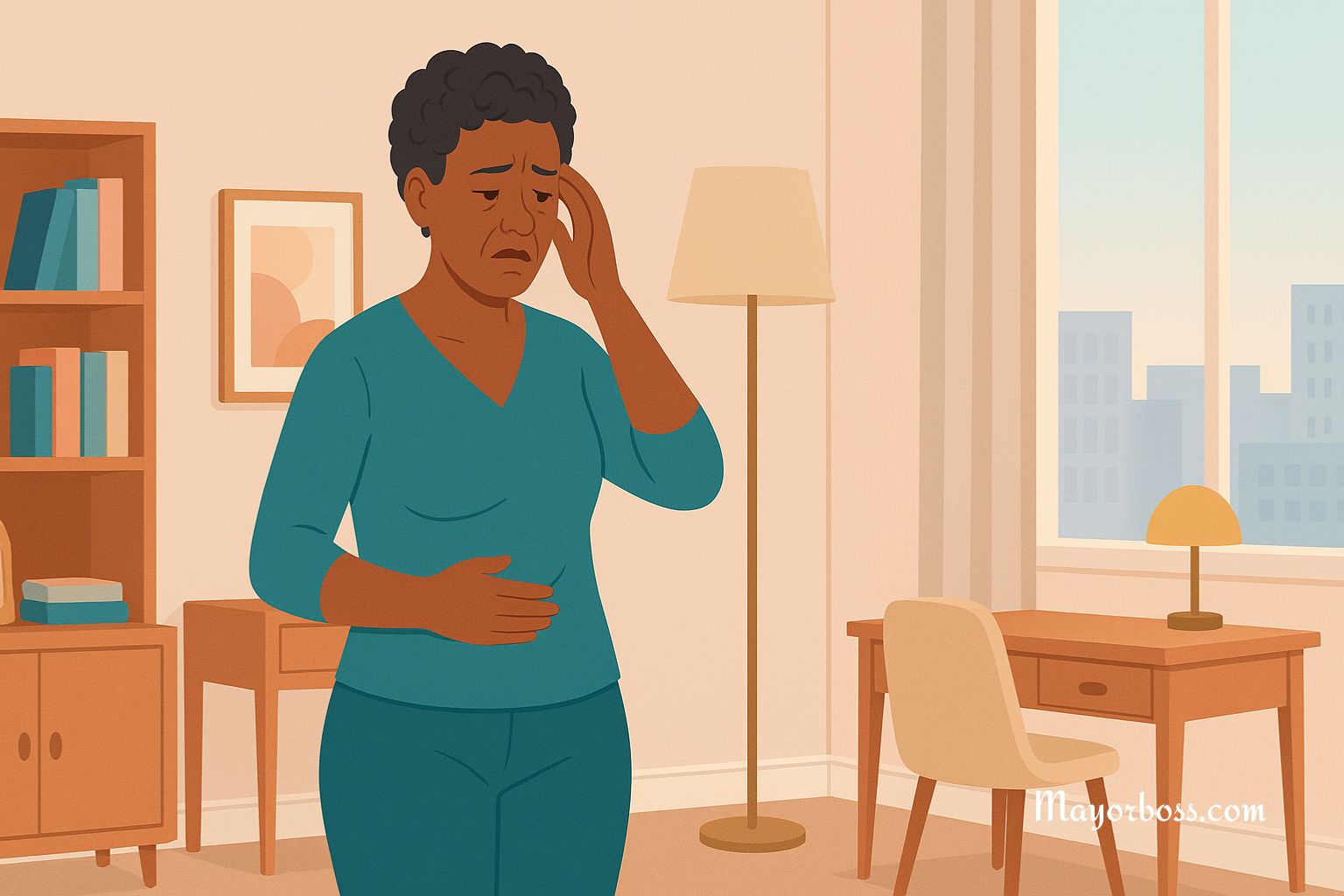What Happens If Your Estrogen Is Too High
Estrogen works as a leading hormone in female health. It helps shape puberty, fertility, bone strength, and even mood. When levels stay within a healthy range, the hormone supports smooth cycles and strong tissues. However, when estrogen rises too far, the body starts sending warning signals.
High estrogen, known as estrogen dominance, affects women at any age. Some men notice effects as well, though female bodies respond more strongly.

Estrogen gives the uterus a lining each month, protects bones from early thinning, keeps skin elastic, and keeps cholesterol in check. It also partners with serotonin, a brain chemical linked to happiness and steady sleep. Because one hormone influences so many organs, even a moderate surge can ripple through the entire system.
Causes of High Estrogen
Hormone balance changes for many reasons. Common factors include:
- Natural shifts. Perimenopause can feature wild hormonal swings, including sudden estrogen spikes.
- Excess body fat. Fat tissue converts other hormones into estrogen, leading to an extra supply.
- Certain medications. Hormone therapy, some birth control pills, and slow-metabolized antibiotics can lead to accumulation.
- Liver overload. The liver breaks down used hormones. Alcohol, fatty liver disease, or chronic medication use can slow this process.
- Environmental chemicals. Compounds in plastics, pesticides, and personal-care products act like weak estrogens once inside the body.
- Ovarian or adrenal tumors. Rare growths may pump out additional estrogen.
Common Signs and Symptoms of High Estrogen Levels
High estrogen rarely arrives alone. It travels with noticeable changes such as:
- Tender, swollen breasts
- Bloating that comes and goes
- Heavy or longer menstrual periods
- Mood swings, anxiety, or irritability
- Trouble sleeping
- Low energy despite adequate rest
- Headaches, often around the temples
- Weight gain around the hips and waist
- Decreased sex drive
These signs look similar to other hormone problems, so lab testing remains essential for a precise answer.
The Balancing Act With Progesterone
Estrogen rarely acts alone. Progesterone serves as its natural counterweight during each cycle. When progesterone falls, estrogen stands unopposed, leading to stronger breast tenderness and heavier bleeding. Supporting healthy ovulation helps keep progesterone steady. Techniques include managing stress, ensuring enough quality sleep, and eating foods rich in zinc and vitamin C, nutrients that support the corpus luteum, the structure that releases progesterone after ovulation.
Mood and Brain Effects
High estrogen amplifies certain brain chemicals, which can cause emotional highs and lows. Some individuals feel euphoric one day and tearful the next. Concentration may slip, and memory can feel foggy. Students and professionals sometimes notice sharp swings in motivation. Tracking mood in a journal helps reveal patterns that match hormonal peaks, guiding targeted interventions.
Possible Health Risks
Persistently high estrogen can set the stage for long-term issues:
- Uterine fibroids and endometriosis. Extra estrogen encourages the growth of uterine tissue inside and outside the womb.
- Blood clots. Elevated estrogen thickens blood, raising clot risk in deep veins and lungs.
- Thyroid slowdown. Extra estrogen can bind thyroid hormone, leaving less free hormone to energize cells.
- Breast and uterine cancer. Long exposure to high estrogen increases the chances of mutations within these tissues.
- Gallstones. Cholesterol saturation in bile may rise when estrogen levels climb, leading to painful stones.
Diagnosis: How Doctors Check Estrogen
A healthcare professional begins with a full history and symptom review. Saliva or serum tests then measure estradiol, the active form of estrogen. The test often occurs on day three of a cycle for accuracy. Doctors also check progesterone, because an imbalance between these two hormones often drives symptoms.
Treatment Options
Treatment depends on the root cause:
- Adjusting medication. If a contraceptive or hormone therapy looks responsible, a physician may switch the dose or try a different route.
- Weight management. Losing even five to ten percent of body weight can reduce the extra estrogen produced within fat cells.
- Liver support. A diet rich in cruciferous vegetables, lean protein, and adequate fiber aids hormone clearance. Limited alcohol and proper hydration also support detox pathways.
- Supplement guidance. Some patients benefit from calcium-D-glucarate, diindolylmethane (DIM), or B-vitamins, all under medical supervision.
- Surgery or oncology care. Tumor-related estrogen excess may need targeted removal or medication.
Everyday Steps to Rebalance Estrogen
Lifestyle change provides steady support:
- Choose whole foods. Vegetables, fruits, legumes, and omega-3-rich fish help regulate hormone metabolism.
- Boost fiber. At least 25 grams per day enables the gut to bind and eliminate used hormones.
- Stay active. Thirty minutes of brisk walking, cycling, or swimming five days per week lowers body fat and improves insulin sensitivity.
- Limit exposure to xenoestrogens. Swap plastic containers for glass, avoid heating meals in plastic, and pick fragrance-free personal products.
- Sleep seven to nine hours. Deep sleep allows the liver to process hormone waste efficiently.
- Practice stress relief. Deep breathing, journaling, or yoga can reduce cortisol, a hormone that can indirectly push estrogen higher.
When to Seek Medical Help
Contact a health professional if you notice heavy periods lasting longer than seven days, unexplained weight gain, or mood changes that interfere with daily life. Sudden chest pain, shortness of breath, or severe headaches demand urgent care, as they may signal a clot.
